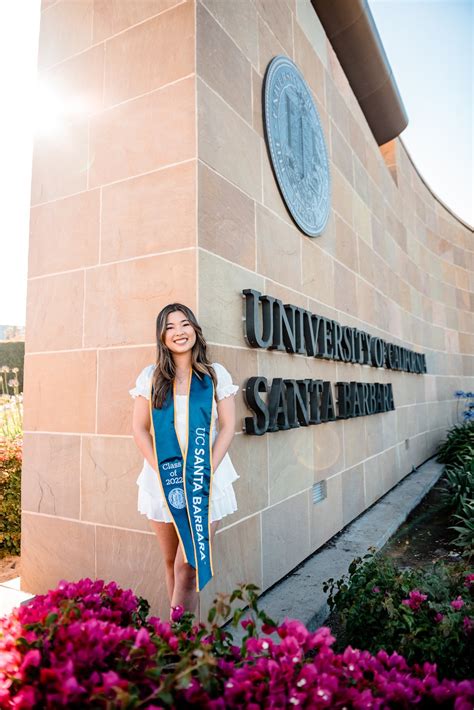Recognized for its academic excellence, the University of California, Santa Barbara (UCSB) boasts an impressive graduation rate that ranks among the highest in the nation. This article delves into the nuances of UCSB’s graduation statistics, exploring the factors that contribute to its success and providing insights for prospective students.

Factors Influencing UCSB’s High Graduation Rate
1. Student Profile:
UCSB attracts a highly qualified student body with strong academic records and well-defined aspirations. The average incoming GPA for first-year students is 4.09, which indicates the students’ commitment to academic achievement.
2. Academic Support:
The university places great emphasis on providing comprehensive academic support systems for its students. These include tutoring, mentoring, writing centers, and counseling services. Additionally, UCSB offers a wide range of academic advising programs that guide students towards success.
3. Faculty Excellence:
UCSB’s faculty is renowned for their expertise and dedication to teaching. Students benefit from close interactions with faculty mentors who provide personalized guidance and support. The university has a low student-to-faculty ratio, ensuring ample opportunities for academic engagement.
Statistical Data on UCSB’s Graduation Rates
1. Overall Graduation Rates:
The six-year graduation rate for first-time, full-time students at UCSB is 86%. This means that 86% of students who start their undergraduate studies at UCSB as freshmen graduate within six years.
2. Graduation Rates by Major:
Graduation rates vary across different majors, reflecting the varying levels of academic rigor and requirements. For example, the six-year graduation rate for engineering majors is 82%, while for social sciences majors it is 90%.
3. Graduation Rates by Student Group:
UCSB is committed to providing equitable access to education and support for all students. Graduation rates differ across student groups, with underrepresented minority students and first-generation college students having slightly lower rates compared to their white and Asian American counterparts.
| Student Group | Six-Year Graduation Rate |
|---|---|
| White Students | 88% |
| Asian American Students | 89% |
| Hispanic Students | 83% |
| Black Students | 81% |
| Native American Students | 79% |
| First-Generation College Students | 81% |
4. Graduation Rates by Entrance Pathway:
Students who enter UCSB through different pathways may have varying graduation rates. For example, students admitted directly from high school have a higher graduation rate (87%) compared to transfer students (82%).
| Entrance Pathway | Six-Year Graduation Rate |
|---|---|
| High School Graduates | 87% |
| Transfer Students | 82% |
Strategies for Enhancing Graduation Rates
1. Early Intervention:
Identifying and supporting students who are struggling early in their academic careers can significantly improve their chances of graduation. UCSB has implemented initiatives such as academic boot camps and early warning systems to provide timely assistance to students who need it.
2. Academic Advising:
Effective academic advising is crucial for guiding students towards graduation. UCSB advisors work closely with students to develop personalized academic plans, monitor their progress, and provide guidance on course selection and career exploration.
3. Supplemental Resources:
Providing access to additional resources such as tutoring, writing centers, and financial aid can help students overcome academic challenges and stay on track towards graduation. UCSB has invested heavily in these resources to ensure student success.
FAQs on UCSB’s Graduation Rates
1. What is UCSB’s graduation rate compared to other universities?
UCSB’s six-year graduation rate of 86% is higher than the national average for public universities (60%) and comparable to other top research universities.
2. Are there any resources available to help me improve my chances of graduating?
UCSB provides a wide range of academic support services, including tutoring, academic advising, and counseling. Students are encouraged to utilize these resources to enhance their academic performance.
3. What are the factors that contribute to the lower graduation rates for underrepresented minority students?
Research suggests that underrepresented minority students often face additional challenges such as financial constraints, lack of access to academic support, and cultural barriers. UCSB is working to address these challenges through targeted programs and initiatives.
4. How can I ensure that I am on track towards graduating within four years?
Developing a clear academic plan, meeting with your academic advisor regularly, and utilizing available academic resources can help you stay on track towards a timely graduation.
5. What happens if I don’t graduate within six years?
Students who do not graduate within six years are still eligible to continue their studies at UCSB, although they may be subject to additional fees.
6. How can I get more information about UCSB’s graduation rates?
UCSB publishes detailed graduation rate statistics and provides additional information on its website. Prospective students are encouraged to explore this information and contact the Admissions Office for further guidance.
Conclusion
UC Santa Barbara’s high graduation rate is a testament to its commitment to student success. By providing a supportive learning environment, comprehensive academic support, and diverse engagement opportunities, UCSB empowers its students to reach their academic goals and prepare for a bright future. Prospective students should consider UCSB’s graduation rates and the university’s dedication to student success when making their college decisions.
